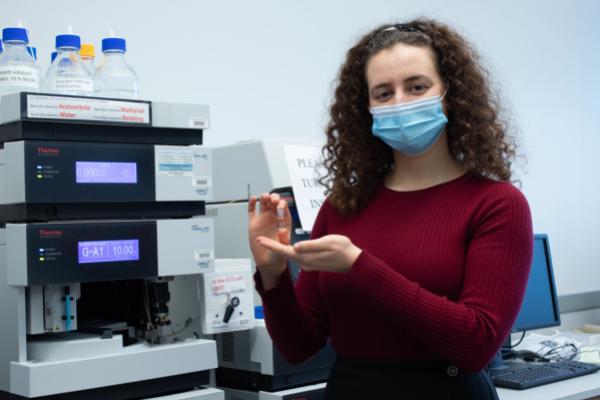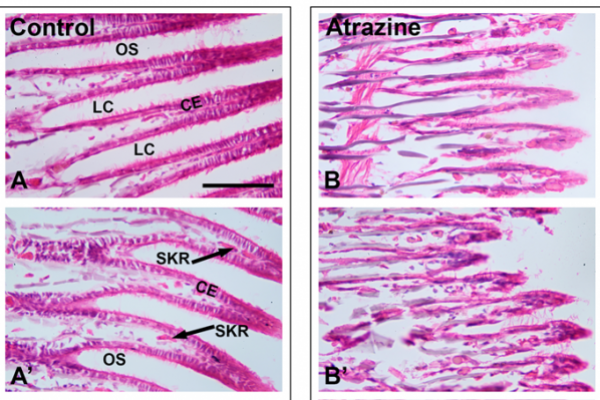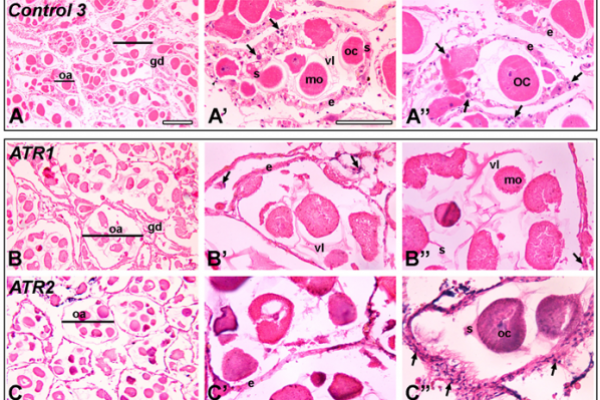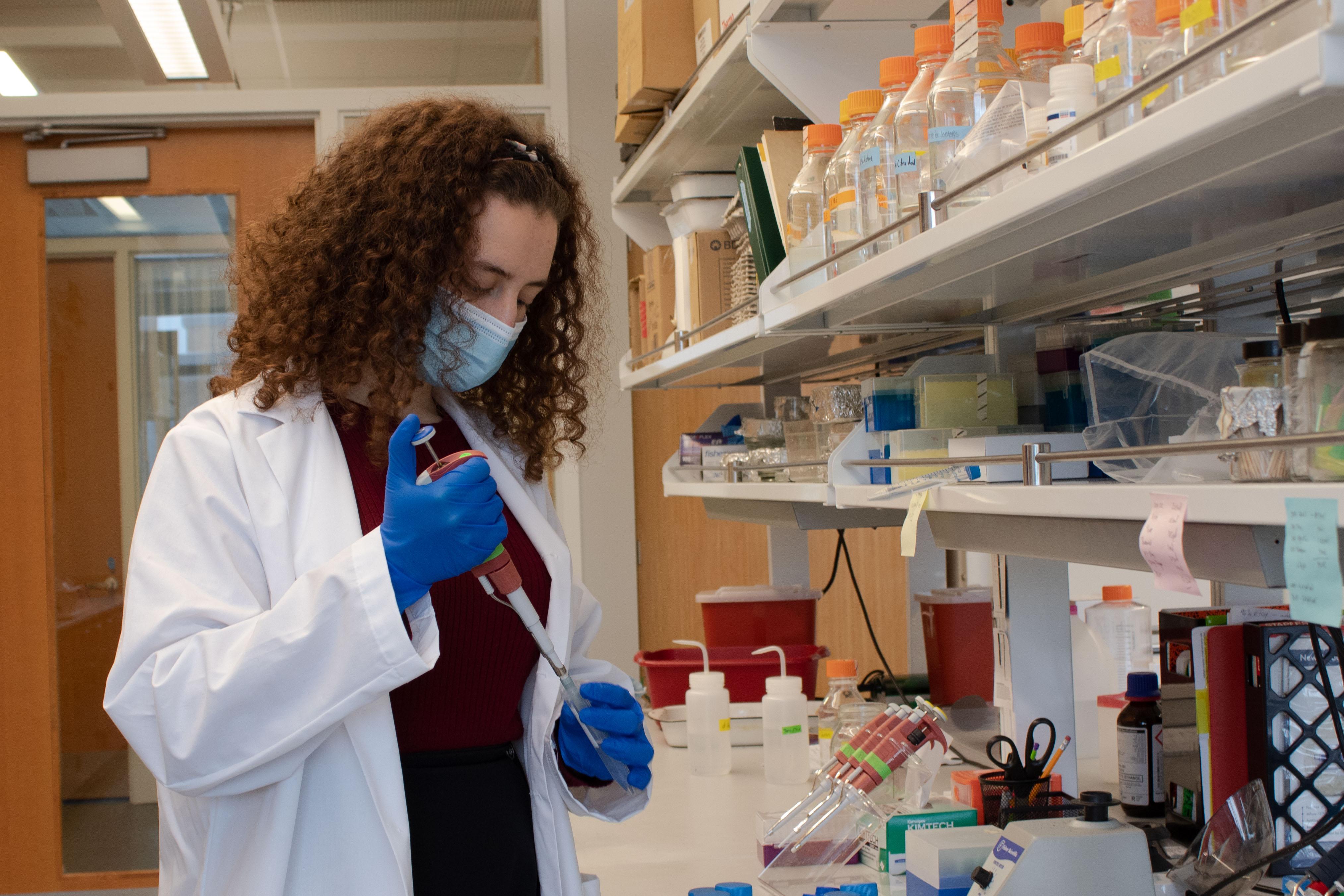2017 to 2021
Effects of Atrazine on freshwater mussels (Elliptio complanata)
Major: Biology
Faculty Advisor: Dr. Poongodi Geetha-Loganathan
The focus of this research is on the chemical Atrazine. It is a commonly used, moderately hydrophilic, herbicide. Throughout the United States alone 76.4 million pounds are used annually. In addition, it has a half-life of 124-365 days, which means that although it is found in our water sources, including drinking water, it also stays there for a long time. It has been found to have an effect on other organisms, not just the intended plants. It is important to research it as it is so widespread, stays in the water for so long, and is known to have an effect on living organisms, particularly those constantly exposed. We are researching its effects with Elliptio complanata (freshwater mussels) as our model organism. We look at the histological differences between the control and the treatment group, and are currently working on measuring the bioaccumulation within the samples as well.
(Note: Histology is the microscopic anatomy of biological tissues.)
Overall, we see effects within the gills (how the mussel breathes) and the viscera (the reproductive organ), however, no results are seen within the mantle. If you look at the images below, you can see how the control panels and Atrazine (ATR) treated ones look different. The lines are a lot more blurred, the shape is wonky, and certain dots are missing.
Gills: In the black background image you can see how there are two stains used, a green and a blue. The blue one shows the nucleus of the cell (so those living), and the green shows dead cells. You can see how in the control panel (far left) there is very little green just on the tip, whereas in the atrazine treated there is a lot more green, and all the way down the structure. This shows that the chemical Atrazine actually caused cells to die a lot more than usual, and all throughout the structure weakening it. You can see this in the image with long finger-like protrusions (gills). This cell death caused the coating (ciliary epithelium) to be a lot thinner, have less and fused hair-like protrusions (ciliary cells) from it, these are typically there to increase surface area in the gills and help the mussel to breathe. They are also less uniform in size and arrangement itself which is due to a decrease in number and size of skeletal rods (important supportive structure for the gills) within the coating shown and the connective tissue supporting the filaments. This causes the gills to not be able to breathe as well.

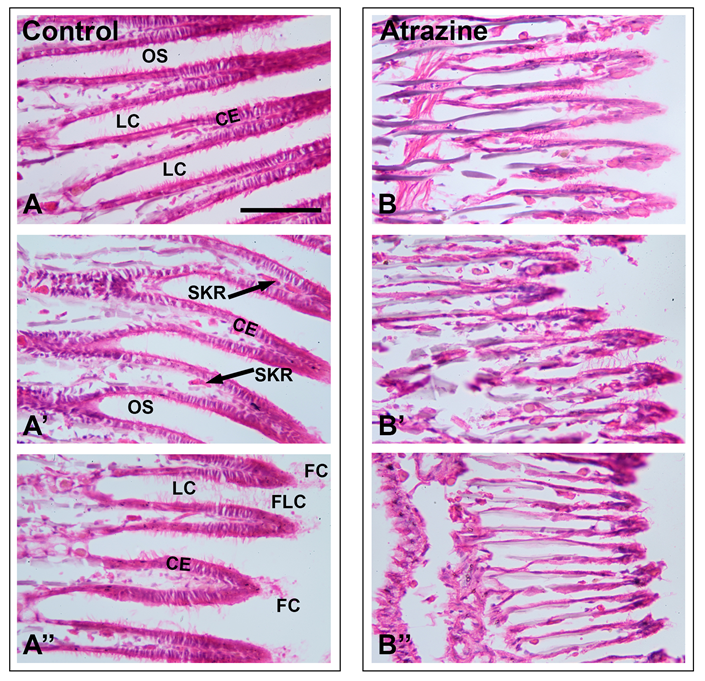
Viscera: Inside the males' reproductive organ cells (the busy-looking slide with dark purple dots), there are fewer cells that help create sperm (also known as spermatogenic cells) and they look blurry under the microscope, meaning they don't work as well. Also, there are a lot more defined dark purple circles in the control, which are the sperm, and there are very few in the Atrazine treated sample. So ultimately they aren't able to create as many nor as good sperm cells when exposed to Atrazine. Within the female reproductive system (the slide with large pink circles containing filled pink circles within it) there are also dramatic effects seen. You can see that there is a disintegration of many different parts including the oocytes, ovarian acini, nucleus, ovarian follicles, and the epithelium of the genital ducts. Cytolysis, which is cell death, is seen within the oocyte because the yolk and stalk that is connected to the acini follicular wall is damaged. Therefore the female reproductive system is also strongly affected.
Testes:

Ovaries:
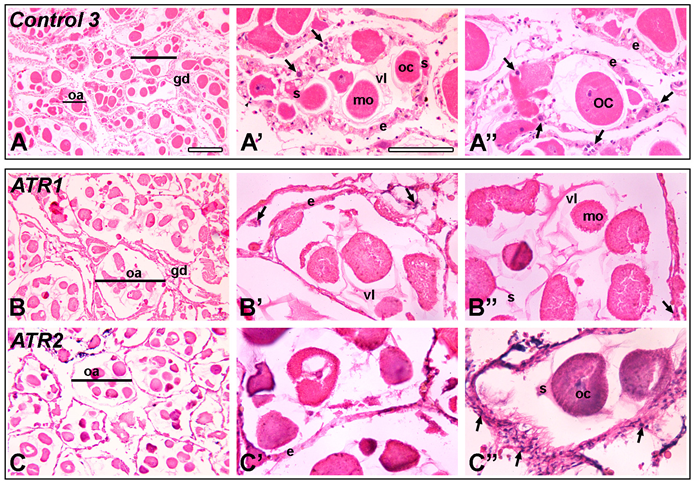
I am currently working on measuring bioaccumulation. So measuring how much Atrazine within the samples causes the effects we can see and talked about above.
I have learned that you will get knocked down and frustrated a lot. One of the instruments I work with has been breaking on and off for the past 2.5 years and it is very frustrating. Research never goes smoothly (in my experience). It is important to have patience and dedication. It takes a long time and the results are rarely what you were expecting. However, there is no greater feeling than finally getting results and having all of that hard work pay off.
I remember it was a bitterly cold day sometime in the spring, and I had to go collect water samples with another researcher, Manna Job. We had to go to specific points along the lake to collect the water, and at the final spot, as we were collecting the water, I slipped and nearly fell in. This adventure culminated in a very wet (and cold) leg, four full jugs of collected water, and a fun walk back to the car. However, I got a funny story, and a good memory to look back on, so not all bad!
I grew up moving throughout different countries and different states. However, both of my parents are big proponents of nature and love the outdoors. I was fortunate enough to go to national parks and out into neighborhood woods all throughout my life. I was able to see its beauty and was sparked with curiosity in different excursions. What frog is that? How do they even breathe under water and in the air? What's that weird looking mushroom...is it even a mushroom? All that curiosity grew with me, and I was finally able to get more answers through science classes, Discovery Channel, and National Geographic (shoutout to David Attenborough). It was a subject that provided me with answers, and subsequently even more questions. It is something that is ever-growing and ever-changing, and ultimately simply fascinating.
In the future I plan to attend medical school. I am interested in the influence of environmental factors on human health and how different things affect us. I hope to be able to do programs such as Doctors Without Borders and travel to see and experience new things. Every place on earth brings with it its own beauty and I would love to be able to experience it! With that though I would love to be able to help out the people in the places I visit, and as a doctor I will be able to do that.
